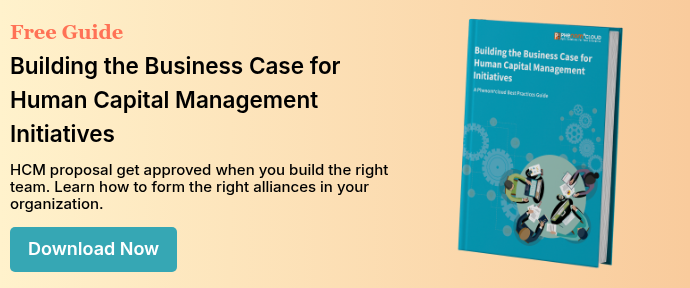
If you are reading this, you probably have made the decision to do something about your workforce challenges. Congratulations.
Now the work begins – building a business case to get new technology approved. A solid business case requires good research and meticulous attention to detail. How you present your case will reflect on how you will execute your plan.
The first step is to review your company’s purpose and strategy.
Business Strategy
You must present a proposal that will support your organization’s strategy. The solutions you offer must link directly to business challenges and opportunities.
When you are assessing the strategy, break it down into its components. The information you gather will be useful in planning your project.
- Financial strategy. How the company funds its capital expenditures will be a part of the cost analysis.
- Product or service strategy. The strategy will determine the shape of the workforce, now and in the future.
- Marketing strategy. When, where, and how the company plans to grow its market share will determine significant technology needs, such as localization and learning.
- Technology strategy. This will determine the type of technology and the deployment model you choose for deploying your technology footprint.
Workforce Strategy
In this step, you will map the size, shape, and cost of the workforce needed to execute the business strategy.
Build alliances by talking with key people about their challenges and asking their feedback. Much of the information you need to make your case is in the heads of your people. Seek to understand their challenges and ask them about potential solutions.
These conversations will have consequences. By bringing up their pain points, you will create at least some hope that something will be done about them. You will also sow seeds of dissatisfaction with the status quo. That will lead to a willingness to adopt new solutions.
Assess the Current State
Review of the current processes and technology to determine if they are meeting your needs. These questions may be helpful in the analysis:
- What are you not doing well? What did your people say they wish you could do better?
- What are you unable to do that needs to be done?
- What costs are out of line? (Labor costs of manual transaction processing will help your case for self-service.)
- What are your employee retention challenges?
- Are you feeling the pinch of skill gaps?
- Do you have difficulty recruiting the right people?
- Are recruiters overworked and underperforming because they are buried in paper resumes?
- Are you unable to assess whether you are in compliance with mandatory training?
Explore Solutions
For each of the gaps, investigate whether an improvement in technology will help you overcome the problem. As we discussed in the strategy analysis, technology strategy will influence what type of software deployment you will use. Most companies today use a cloud Software as a Service model, and the percentage of businesses who do is rising.
Most vendors will be happy to talk about your needs and provide pricing guidelines. You can also get good comparisons from independent industry analysts and publishers though they may not include all the indirect and hidden costs you need to consider.
Calculate the Costs
Your presentation will require a cash flow estimates of the current and future states over the life of the technology based on total cost of ownership (TCO). The company’s technology management lifecycle policy may govern the time, but you may need to work with your CIO and CFO to decide on the lifespan.
For guidance, see our article on How to calculate total cost of ownership for a Human Capital Management System
Prepare and Deliver the Presentation
Your company will most likely have guidelines on how to develop a written proposal, and may govern how you structure the oral presentation. If not, articles from SHRM and HCI will be helpful.
Your proposed solution will likely be costlier than your current technology, and your TCO will not address the benefits of your initiatives. To show value, you will need to demonstrate the business impact. Industry sources such as Aberdeen Group, Human Capital Institute, and Bersin will be helpful in showing how companies who do better at human capital management are more profitable than those who don’t. You can find case studies that show direct impact.
Include these items in your presentation:
- State the business imperative.
- Show the gaps you identified in your analysis.
- State the proposed solution. Include a discussion of alternatives you investigated.
- Present your cost analysis.
- State the benefits and impact on the business.
- Discuss the risks. Be sure to include doing nothing.
- Present a call to action. Propose the roadmap, and discuss who will do what and when.
(Source: “The Business Case for Human Capital Analytics.” Human Capital Institute. 2013.)
Today’s technology provides very useful tools that will help you boost employee engagement and productivity. We hope this helps you put together a strong case for improving your organization’s performance.
Contact us today or call 1-855-978-6816 to talk with us about your business needs.
PhenomᵉCloud is a full-service technology company dedicated to helping clients solve business problems, improve the capability of their people, and achieve better results.


Leave a Comment